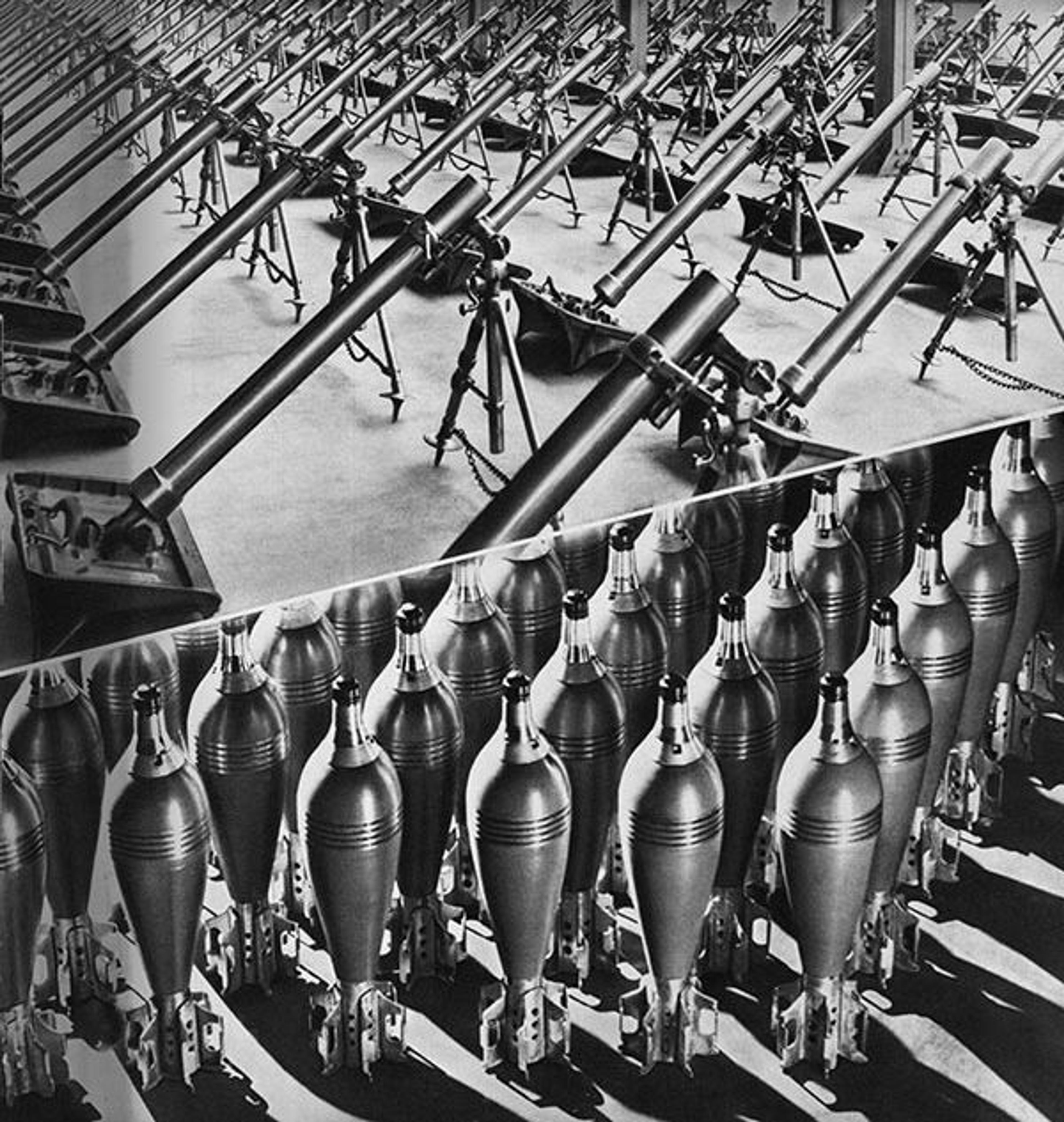
Edgar Brandt. Oxy-acetylene torch-welded munitions. Établissements Edgar Brandt. Paris, 1930s. Watson Library Special Collections
«From finials and doorknockers to gateways and stair railings, ornate iron has been an important medium for decorative expression since the Middle Ages.»
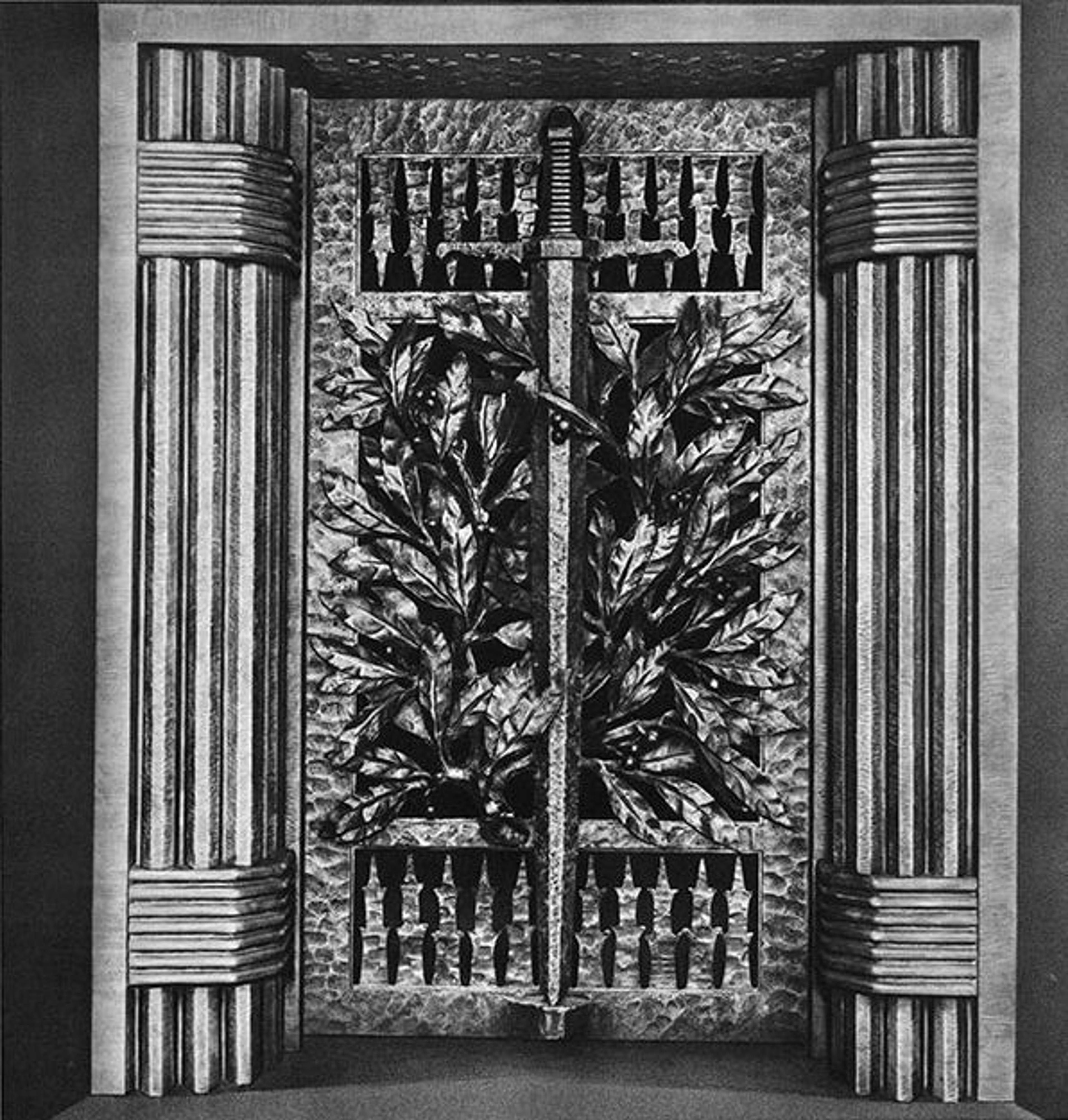
Edgar Brandt. Porte d'accès à la Tranchée des baïonnettes à Verdun, memorial. Établissements Edgar Brandt. Paris, 1930s. Watson Library Special Collections
Watson Library has a wide array of international monographs and trade catalogues on metalwork, featuring decoration and ornament, house furnishings, hardware, fountains, and furniture. A selection of these is currently on display in the Watson Library vitrines.
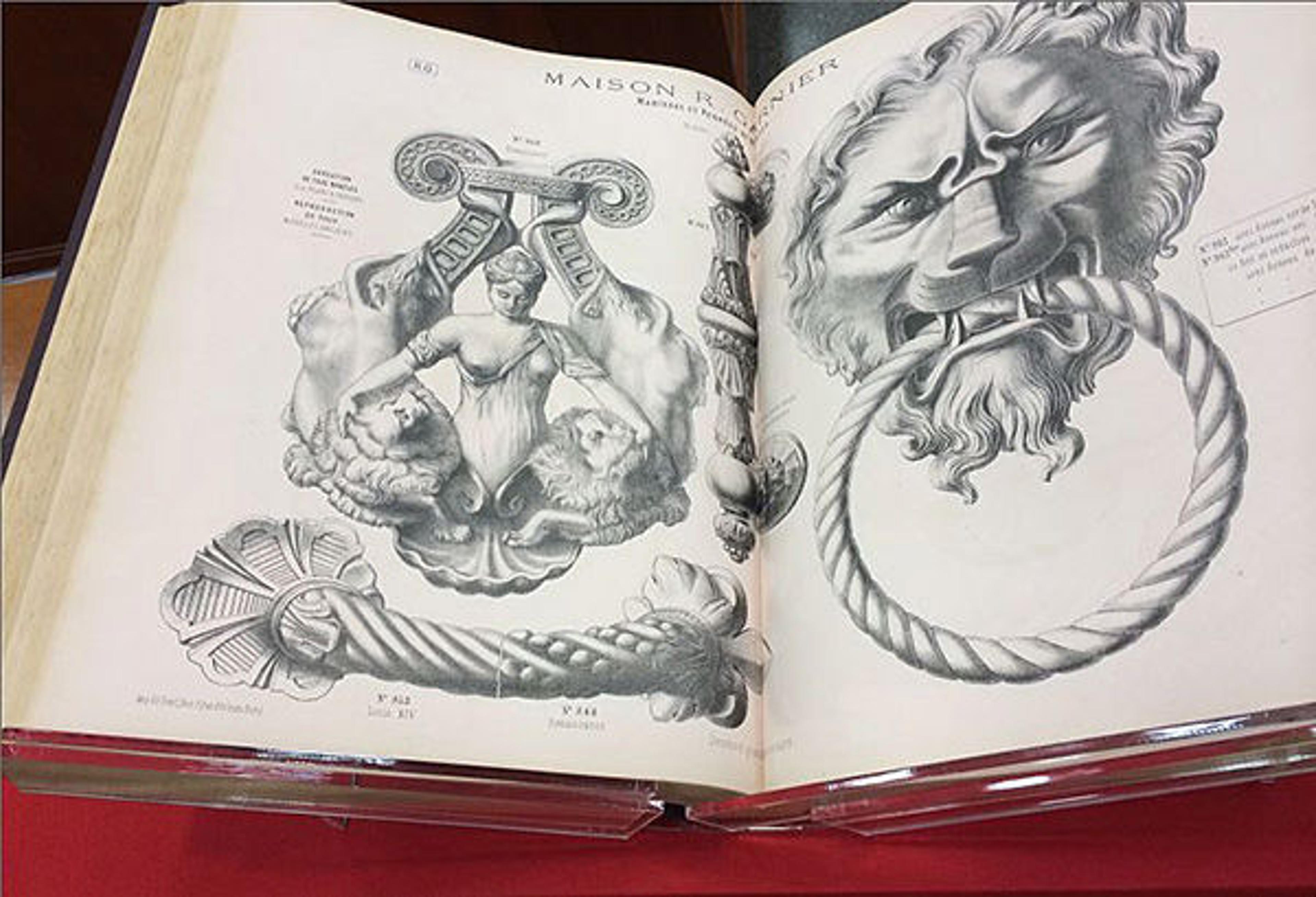
Maison R. Garnier, Brun-Cottan frères successeurs . . . Paris: cuivrerie et serrurerie artistiques . . . Paris: Garnier, 1880s. Watson Library Special Collections
This majestic ironwork trade catalogue, for example, is notable for a few reasons: it was printed on pink-tinted paper, the illustrations were scaled at actual size, and the copy was owned by the firm's owner, Louis-Remi Garnier (d. 1912). It was bound for him in quarter morocco leather with marbled endpapers and sold at the 1912 sale of his library. Maison Garnier began as a locksmith's workshop in 1832. After registering numerous patents for Crémone bolts, Garnier dominated the market for that particular type of window and door hardware, and published this édition de luxe of the company's products. The catalogue offered thousands of lithographs of locksets, doorknockers, espagnolettes, escutcheon plates, lighting fixtures, and ornate decorative work in brass and copper. Many of the designs—encompassing Greek and Renaissance styles to motifs inspired by Louis XVI—are still manufactured by the company today.

Urinoirs: publics et privés, kiosques, sièges et cabinets communs. Paris: Commission des Ardoisières d'Angers, G. Larivière et Cie., ca.1901. Watson Library Special Collections
The fanciful decorative structures above are urinals that were in use in Paris from the 1840s through mid-twentieth century. This trade catalogue, issued by the company G. Larivière et Cie, showcases over twenty models of public "comfort stations," featuring slate interior units and roof tiles. The outdoor restroom designs range from the practical to the fantastical—from riveted sheet metal privacy screens masking simple enclosed stalls, to more elaborate kiosks with iron openwork, mansard roofs, and incorporated streetlights. The catalogue concludes with the company's whimsical pavilion from the 1900 Exposition Universelle.
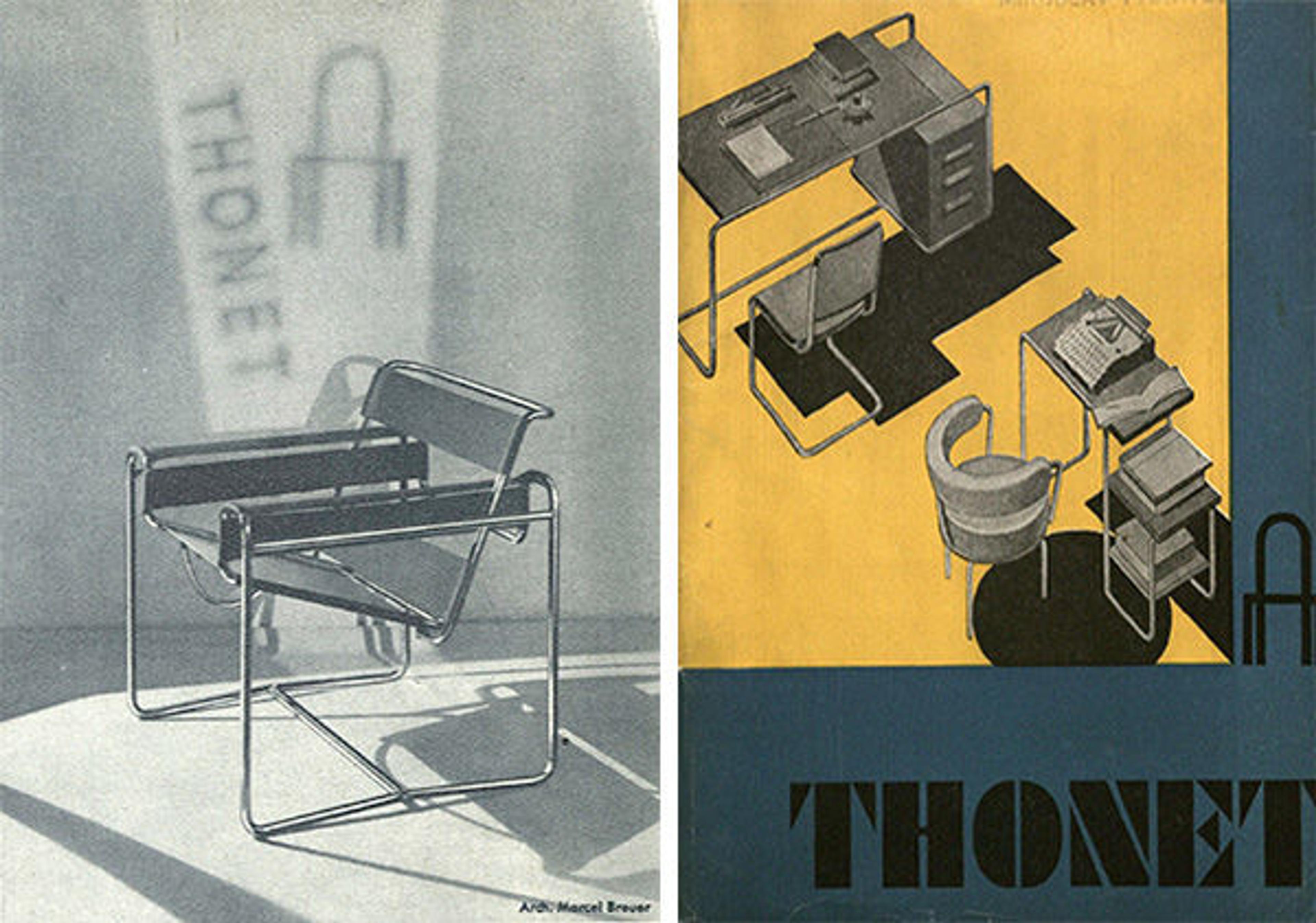
Thonet Stahlrohrmöbel. Berlin: Thonet-Mundus-J. & J. Kohn, 1920s–1930s. Watson Library Special Collections
Perhaps best known for their bentwood café chair, German manufacturer Thonet published this portfolio containing forty-seven advertising cards of the company's "B" product line. Primarily designed by Modernist architect Marcel Breuer—whose design rights Thonet acquired in 1929—this collection focused on tubular steel furniture such as Ludwig Mies van der Rohe's classic lounge chair (B 306), the "Wassily" chair (above left), and at least three other Breuer models still sold by the company today.
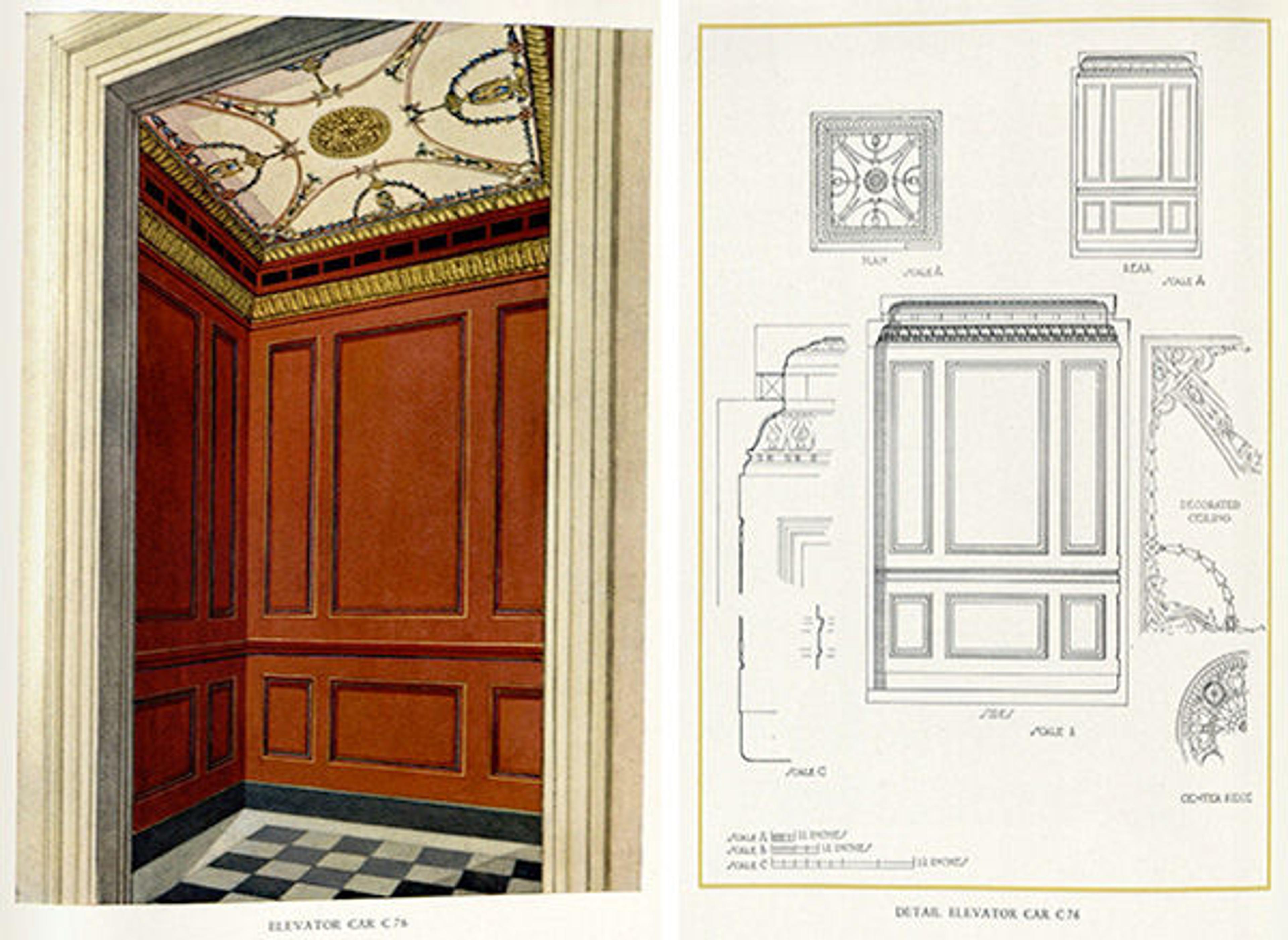
W.S. Tyler Company. Elevator Cars, Elevator Entrances: catalogue no. 56, Cleveland: The Tyler Company. New York: Bartlett Orr Press, 1927. Watson Library Special Collections
Going up? Using chromolithography and line drawings, the Cleveland-based W.S. Tyler Company illustrated their opulent elevator entrances, lighting fixtures, paneling, ornamental friezes and pilasters, and ventilation grillework in this colorful catalogue. Architect William Van Alen (1883–1954) utilized Tyler technology to great effect: the Chrysler Building's (1930) distinctive elevator doors are Metylwood, a patented Tyler product. The Met's collection includes a full Tyler elevator car originally used at Rockefeller Center.
One of the more unusual examples of metalwork in Watson's holdings is Edgar Brandt's World War II commission for artillery featured in his monograph, Établissements Brandt, seen at the beginning of the post. A major figure in both the history of wrought ironwork and French decorative art, Edgar Brandt (1880–1960) issued this bold catalogue at the height of his career. In addition to artillery, this publication highlights the details for which Brandt was known, from graceful wall and torchère lighting to fire screens with stylized flowers and bronze arabesques. The Met owns three pieces by Brandt, including the "Perse" ("Persia") Door (1923) purchased by the Museum directly from the artist.

Subes, Raymond R. Subes ferronnier oeuvres récentes. Paris: Vincent, Fréal, 1951. Watson Library Special Collections
A final example of metalwork on display is Raymond Henri Subes's (1893–1970) elegant balustrading, pictured above, which represents the finest in ornamental ironwork design. From the second volume of his four-volume Ferronnerie Moderne, this folio features ninety-six plates of Subes's Art Deco wrought-iron designs in the form of gates, doors, awnings, grilles, balustrades, chairs, and console tables, including his commissions for The National City Bank of New York, Paris (1931) and SS Liberté (1950).
Come by and check out these gorgeous vitrine displays any time Watson Library is open!